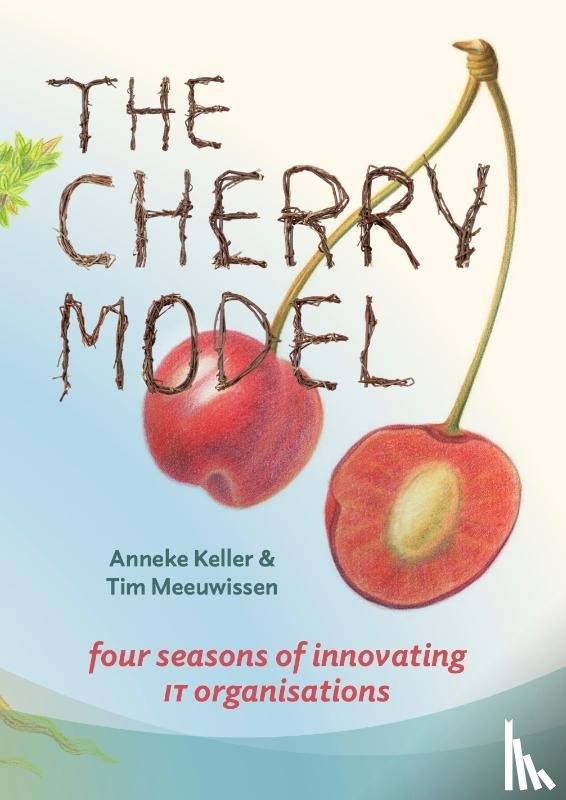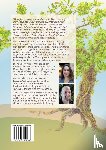Omschrijving
Anneke Keller created the Cherry Model based on 25 years of experience as innovation leader. Anneke and her former colleague, technology guru Tim Meeuwissen guide you through the seasons of innovation “IT is often evaluated based on hard skills. The resilience of architecture, the amount of coding languages you master, how many years of experience the tech department has. These aspects form the pit of the cherry. They are important, but none of them bring innovation. Soft skills do. Innovation grows when people learn from each other, work together and challenge each other. Soft skills are the cherry’s nutritious, sweet flesh that brings all the birds to the yard.”
Anneke Keller created the Cherry Model based on 25 years of experience as innovation leader. Every tech organisation – entire companies even – have a rhythm for growth and change. After a summery phase of seemingly endless innovation inevitably follows a harsh season of stagnation and cutbacks. How can you as a leader predict and recognise these different phases and use them to support and create an innovative organisation?
In The Cherry Model Anneke and her former colleague and technology guru Tim Meeuwissen guide you through the seasons of innovation sharing their stories, lively anecdotes and helpful tips and tricks.
Anneke Keller worked as CTO and IT leader at Wehkamp, Jumbo, Coolblue, TomTom and KPN. Anneke owns a food forest where she grows fruit and vegetables for and with her neighbours.
Tim Meeuwissen has a career in transforming organisations to create software that scales and lasts, and currently works at Jumbo. Tim is a tinkerer and a hobby farmer who keeps chickens, bees and a small flock of sheep. The gap between digital companies and companies that still need to make this change has widened in recent years. Bridging this gap is hard and needs persistence.
Anneke Keller, previously CTO at Wehkamp and Head of Software Engineering at Coolblue and Jumbo, has led several digital transformations. She helped scale tech teams and technology to be able to accommodate growth (TomTom, Coolblue and Jumbo), single brand to multi-brand (Wehkamp), and modernise the technical architecture (all of the above).
These experiences taught Anneke that technology teams, entire companies even, need a certain rhythm to adapt to change. A certain method that you can follow as a leader to support your team in growing to innovation. Anneke and Tims book "The Cherry Model" is about this method and gives plenty of examples from their experiences. Both successful and less successful, all with the intention for others to learn from it.
The book is expected to be ready in August 2023 Introduction
The company’s problem child 11
The structure of this book 14
The cherry tree in the seasons 16
The team’s perspective 17
How the idea started 18
The model 19
Roots 21
Winter
Stormy weather 29
Fix the processes 31
Through the fire and flames 33
In short 39
Big outage, little hassle 40
Trust your team 41
Never, ever again 43
Agile leadership squeeze 44
Stay out 45
Making the right call 46
Spring
The first blossom 51
It’s not about being right, it’s about getting it right 53
Organisational awareness 54
Your team as cherries 55
The rest of the cherry tree 58
Management as the supportive trunk and branches 58
The organisation as an ecosystem 58
Foundation for growth 59
The Cherry Model blueprint 61
Jumbo Tech Campus organisation structure 62
Our new structure 62
Pathfinders 63
Not a market standard 64
How did we innovate? 65
Conway’s law 67
The Cherry Model blueprint overview 68
A leap of faith 69
The right people in the right place 70
Top-down decisions in an Agile organisation 71
Filling in the blueprint 72
Matchmaking 73
Don’t outsource your recruitment issue to HR 74
Tell your story 75
Actively search for candidates 76
Getting to know each other 76
The two traits I look for when hiring 78
Structure 79
Fostering Innovation 80
Change how you prioritise: WSJF 81
Change how you organise 84
Summer
Growing an engineering culture 89
Too much to do 90
The importance of “how you get there” 93
Help, my product owner wants a broken car 94
First, set the purpose 96
Making it happen 98
Filling in the borders 98
Things management gets to decide on 99
Strategy 99
Organisation 100
Metrics 101
Budget 101
Team policies 102
What teams get to define 104
Progress 104
Deadlines 105
Technology 107
Autonomy that bites the hand that feeds 108
TechBoard for consensus 109
Influencing is all we can and should do 109
Processes 110
So when is your team ready? 111
Pizza sessions 112
Autumn
Mirror the team 117
Meltdown 118
Defeated 120
Close the loop - again 122
Success 125
Spread the news 126
Time to think ahead 128
Don’t overcomplicate your technology strategy 128
Different types of software 128
To build or not to build. That’s the question 130
Why Lego Technic is the microservices architecture of toys 131
Phase 1, DIY software 132
Phase 2, Standard products 132
Phase 3, Customise, customise, customise 133
Phase 4, Help! It is getting too complex 134
Phase 5, The future 135
Scrum your architecture 136
Epilogue
The tree keeps on growing 137
How the Cherry Model came to be 139
KPN 139
TomTom 140
Coolblue 141
Jumbo 141
In conclusion 143
Executive Summary
Thank you! 153
About the authors 154
Anneke Keller 154
Tim Meeuwissen 155




